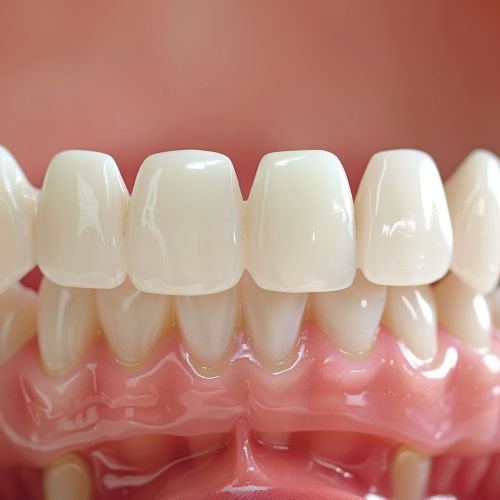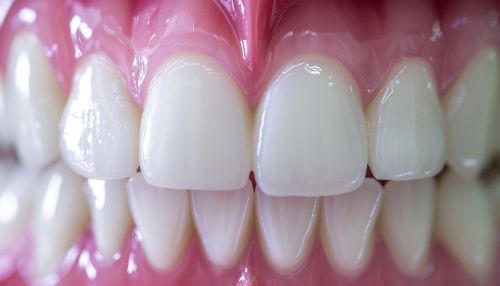Dental Anatomy
Overview
Dental anatomy is the branch of anatomy that pertains to the structure and development of the teeth. This field of study is fundamental to the practice of dentistry and includes the study of the development, morphology, function, and identity of each of the teeth in the human dentition.


Tooth Morphology
Tooth morphology refers to the structural design of the tooth. This can vary significantly depending on the type of tooth. Humans have four different types of teeth: incisors, canines, premolars, and molars, each with a unique form and function.
Incisors
The incisors are the front teeth present in most mammals. They are typically the first teeth to erupt and are primarily used for cutting food.
Canines
The canines are situated at the 'corners' of the dental arches. They have a sharp, pointed biting surface and are used for ripping and tearing food apart.
Premolars
The premolars, also known as bicuspids, are used for chewing and grinding food. Adult humans have eight premolars in total, two in each quadrant of the mouth.
Molars
The molars are the largest of the teeth. They have a large, flat biting surface, which is used for grinding food. The third molars are commonly referred to as 'wisdom teeth'.
Tooth Development
Tooth development, or odontogenesis, is the complex process by which teeth form from embryonic cells, grow, and erupt into the mouth. This process begins in the fetus and continues into adolescence.
Dental Formula
The dental formula refers to the number and types of teeth in a person's mouth. The human dental formula is 2-1-2-3, meaning two incisors, one canine, two premolars, and three molars on each side of the mouth, both top and bottom.
Dental Occlusion
Dental occlusion is the manner in which the upper and lower teeth come together when the mouth is closed. Proper occlusion is necessary for efficient chewing and can also have aesthetic implications.
Dental Pathology
Dental pathology refers to diseases and abnormalities of the teeth, including dental caries, periodontal disease, and developmental abnormalities.
